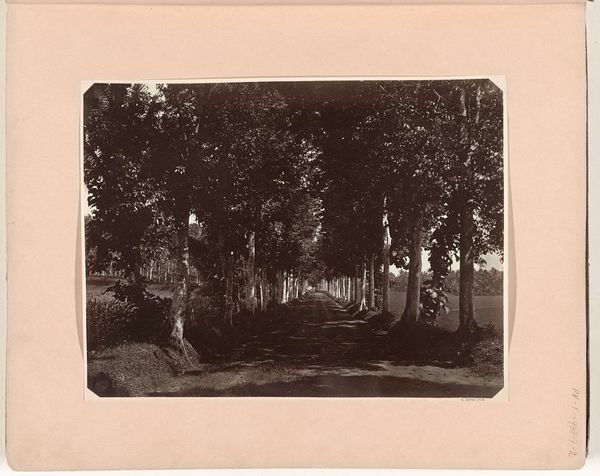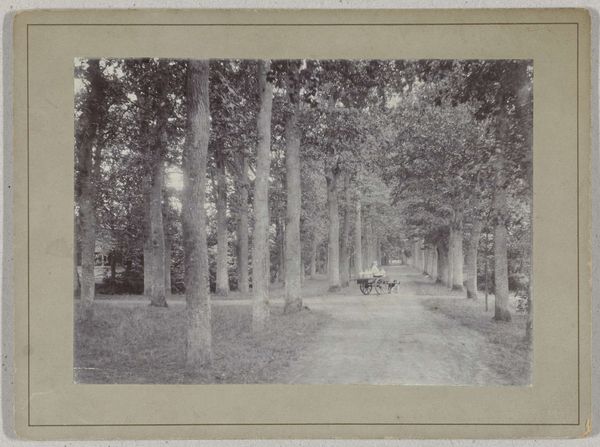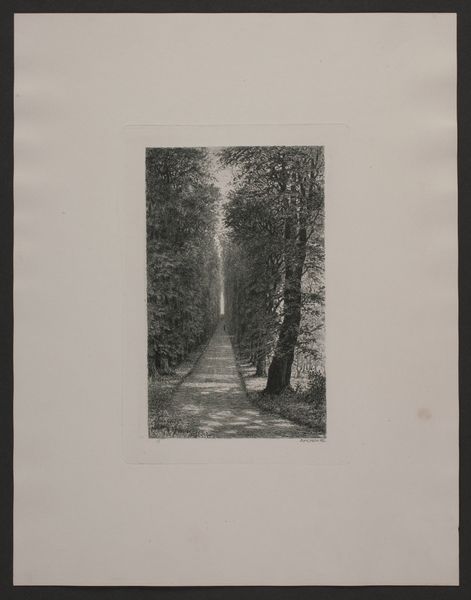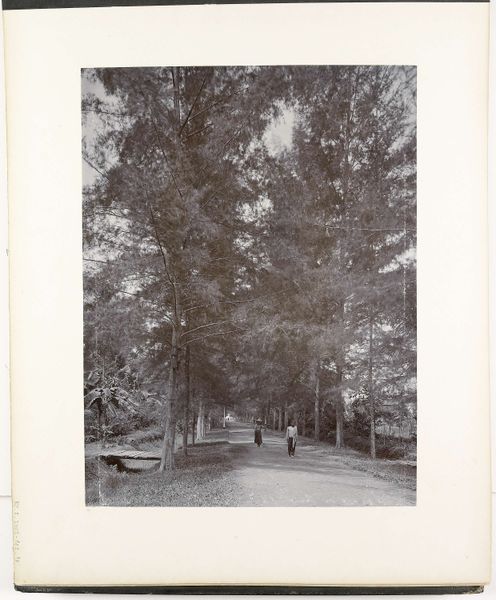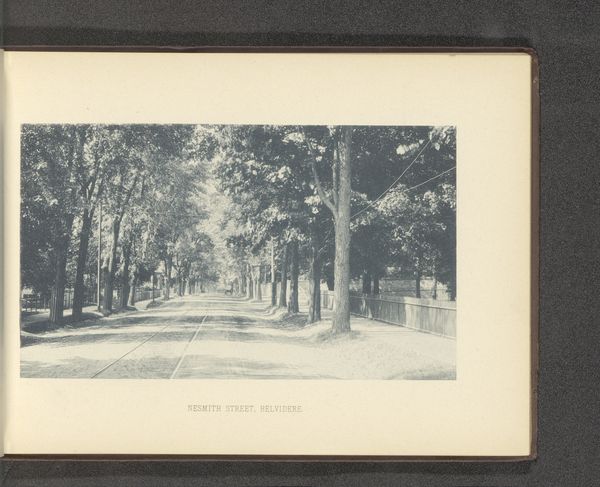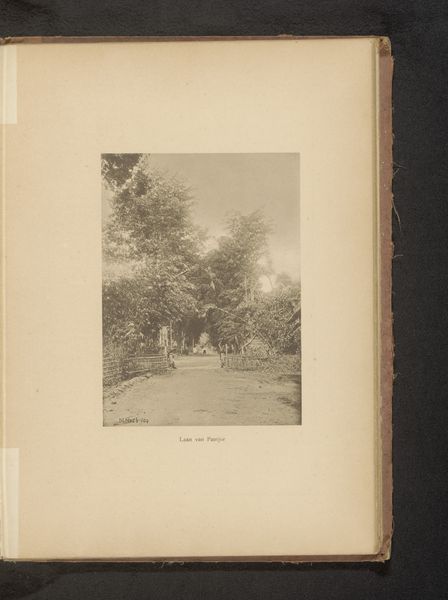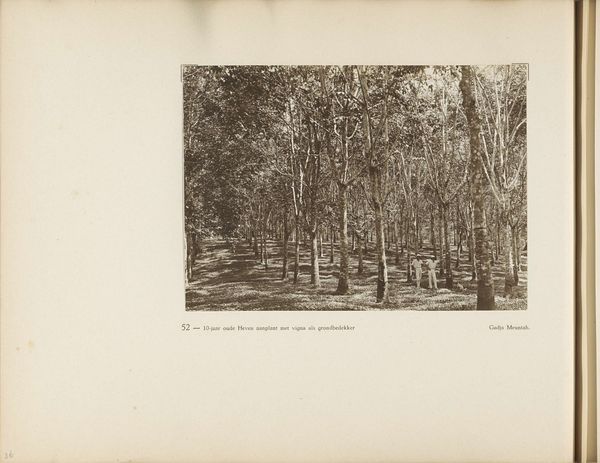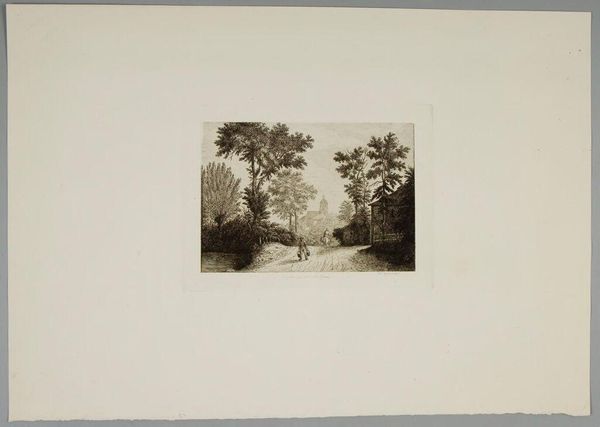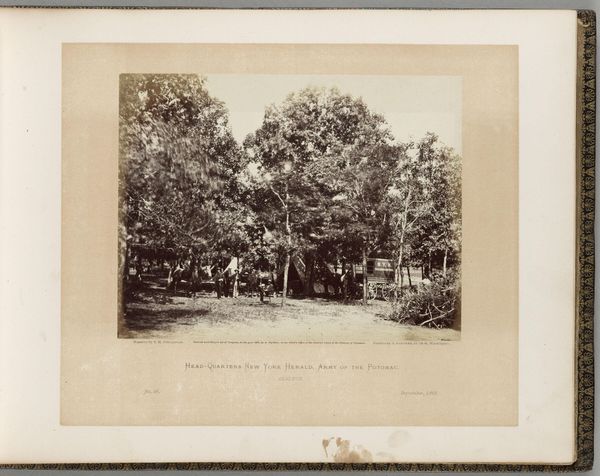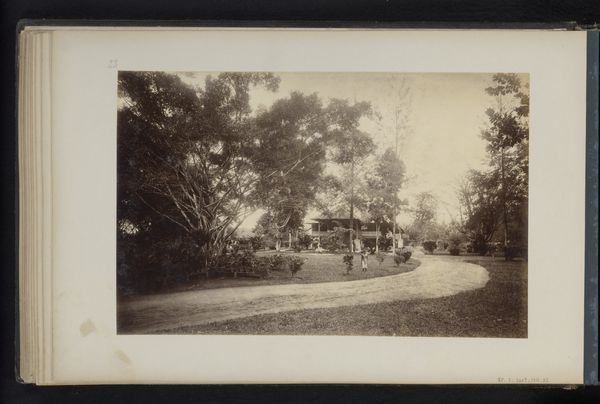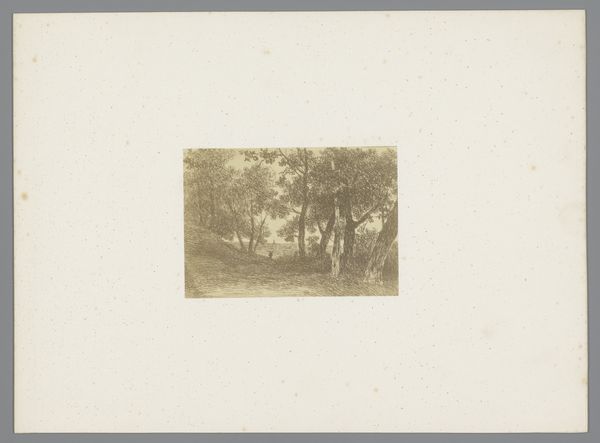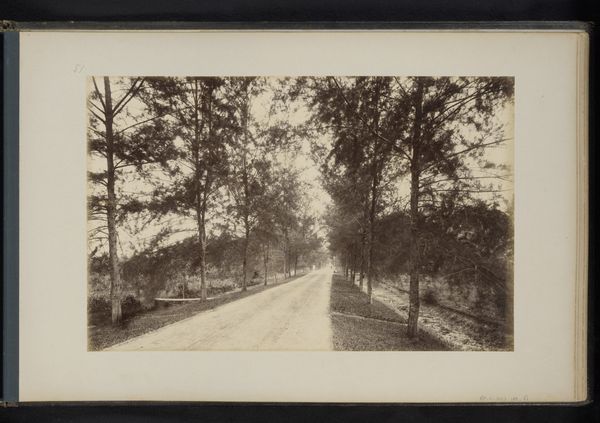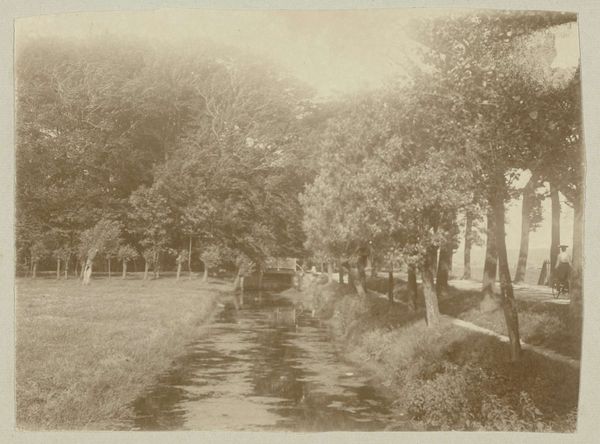
Pagina 139 van fotoboek van de Algemeene Vereeniging van Rubberplanters ter Oostkust van Sumatra (A.V.R.O.S.) c. 1924 - 1925
0:00
0:00
photography, gelatin-silver-print
#
pictorialism
#
landscape
#
indigenism
#
street-photography
#
photography
#
orientalism
#
gelatin-silver-print
Dimensions: height 240 mm, width 310 mm
Copyright: Rijks Museum: Open Domain
Editor: Here we have "Pagina 139 van fotoboek van de Algemeene Vereeniging van Rubberplanters ter Oostkust van Sumatra (A.V.R.O.S.)", a gelatin silver print, dating from around 1924-1925. It depicts a tranquil path lined with lush trees. I am struck by the single figure walking away from us. How do you interpret this photograph within its historical context? Curator: That's a great observation. While seemingly a peaceful landscape, this image is deeply embedded in the complex history of Dutch colonialism in Sumatra. The "Algemeene Vereeniging van Rubberplanters ter Oostkust van Sumatra," or AVROS, was essentially a conglomerate of plantation owners profiting from rubber production. We need to consider whose labor built this path and at what cost? Editor: So the serene scene is actually a facade, concealing exploitation? Curator: Exactly. The lone figure might be interpreted as representing the colonizer, isolated within a system built on the exploitation of indigenous labor. Consider also the composition: the receding path draws the viewer in, subtly inviting complicity in this colonial vision. What does it mean to frame this specific perspective during this period? Editor: It's like the photograph is presenting a sanitized version of reality. I hadn’t thought about it that way initially. Curator: It's crucial to deconstruct these seemingly benign images. This photograph isn’t just a landscape; it's a document reflecting power dynamics, the objectification of both people and the land, and the systematic erasure of indigenous narratives. Editor: Thinking about it as a form of Orientalism, then. It reframes a place and its people for a specific audience with its own agenda. Thank you; that has completely changed my perspective. Curator: Precisely. It is in peeling back these layers that the photograph can become a powerful tool for understanding the uncomfortable truths of our past and its lasting legacies.
Comments
No comments
Be the first to comment and join the conversation on the ultimate creative platform.
